The ghostly remnants of long-since-demolished structures at historic properties around the country have been revealed by the hot weather.
As new pictures show, parch marks have appeared at popular visitor destinations managed by the National Trust.
They are formed when grass growing over buried walls or other archaeology dries out at a different rate compared to the surrounding area.
The new marks in the grounds of Fountains Abbey in North Yorkshire and Mottisfont in Hampshire give a clear view of both the foundations of a long lost hall and the remains of buried walls that date back as far as the 13th century.
Tom Dommett, the National Trust’s head of historic environment, said: ‘Parchmark visibility varies from year to year, historically only showing well every 15 years or so.
‘This year parchmarks are showing more clearly, and have also been recorded earlier in the year, after an exceptionally dry spring.
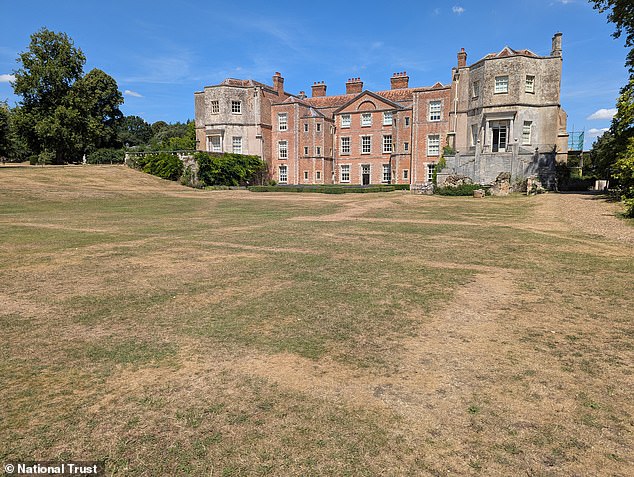
The ghostly remnants of long-since-demolished structures at historic properties around the country have been revealed by the hot weather. Above: Parch marks at Mottisfont in Hampshire. They are the remains of buried 13th and 16th century wall foundations
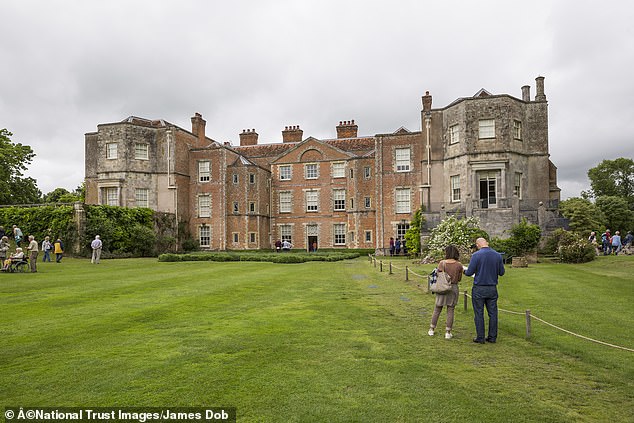
Before: A similar angle of Mottisfont taken when the grass was too green for the parch marks to be visible
At Fountains Abbey, traces of lost buildings are visible on the West Green.
The largest structure is an aisled hall that experts believe once accommodated guests.
The interior was divided into aisles by rows of columns, which show up in the parch marks.
The base of one column also survives above ground.
Also now visible, closer to the abbey, is the Lay Brothers’ Cloister, a colonnaded building.
The remains of this were removed by William Aislabie in the 1770s to make the west façade of the abbey look more impressive.
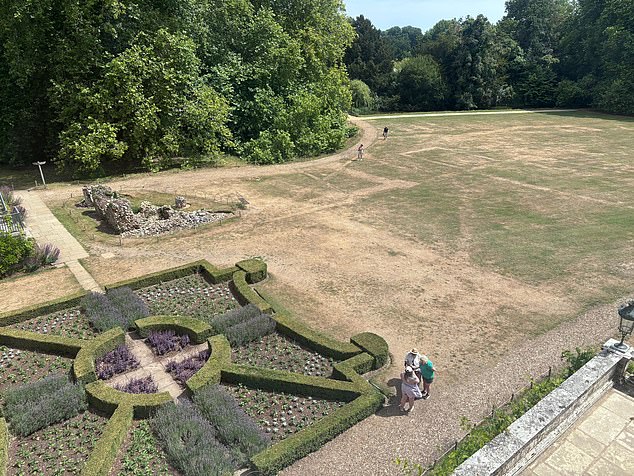
The parch marks at Mottisfont are what is left of monastery buildings including a cloister and various other structures, as well as later Tudor alterations
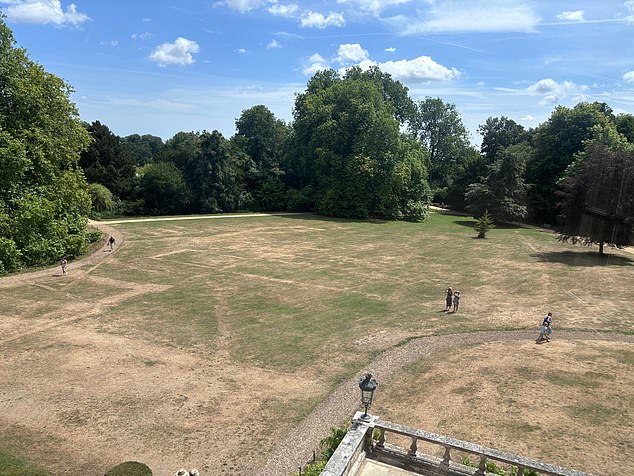
The parch marks in the ground of Mottisfont. The property was given by Henry VIII to favoured statesman Sir William Sandys
National Trust archaeologist Mark Newman said: ‘The parchmarks are showing really well this year.
‘We have a good clear view of the Guest Hall – a building which shows the importance of the abbey’s “hospitality”, one of the monastic duties following Christ’s example.
‘It would have had the capacity, with medieval lifestyles, to have accommodated hundreds of people.
‘It shows that Fountains Abbey has welcomed visitors in large numbers for hundreds of years.’
At Mottisfont, which was among the monasteries dissolved by King Henry VIII in the 16th century, the remains of buried 13th and 16th century wall foundations have appeared as parch marks.
They are what is left of monastery buildings including a cloister and various other structures, as well as later Tudor alterations.
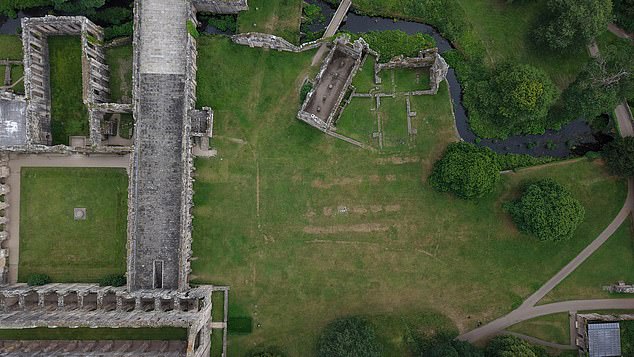
At Fountains Abbey, traces of lost buildings are visible on the West Green. The largest structure is an aisled hall that experts believe once accommodated guests

The interior was divided into aisles by rows of columns, which show up in the parch marks
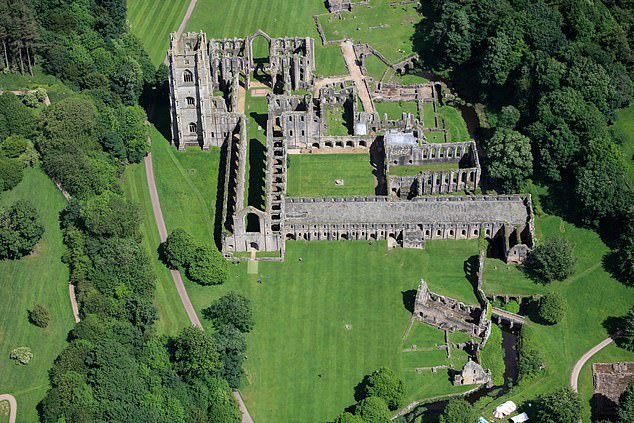
A similar view of Fountains Abbey from the air in 2017, with none of the parch marks visible
Henry VIII later gave Mottisfont to a favoured statesman, Sir William Sandys, who turned the entire priory buildings into a Tudor house.
It remained until remodelled in the 1700s into its present form, when some of the remains of the former priory as well as Tudor buildings would have been buried under the lawn.
The original priory was founded in 1201 by William Briwere, who was a key figure in the royal courts of five Plantagenet kings.
National Trust Archaeologist James Brown said: ‘These are intriguing glimpses into the oldest history of buildings known here at Mottisfont.
‘We have carried out some geophysical surveys but the buildings have never been dug so their secrets remain hidden except for these rare moments when their outlines appear in the lawns.’












